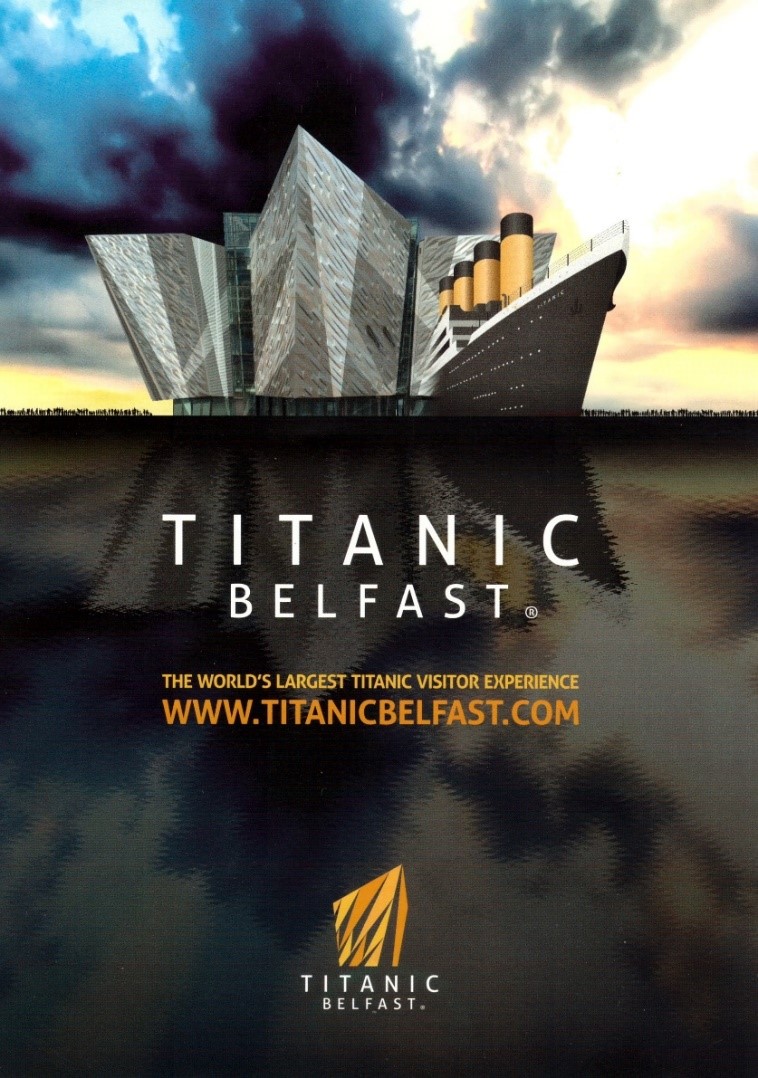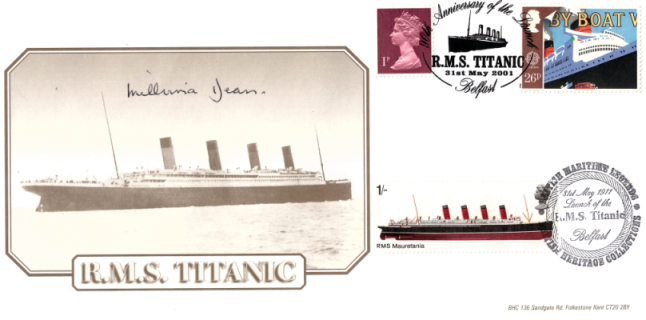The Discovery of RMS Titanic
Equipment had to be specially designed to withstand the water pressures at a depth of 13,000 feet where the Titanic might lay.
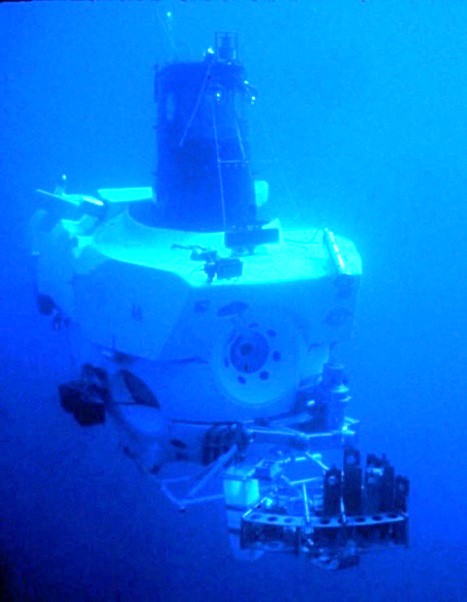
In 1973, Alvin, the deep-ocean research submersible owned by the United States Navy, went through design changes. Her steel hull was replaced with titanium alloy to better withstand the pressures involved.
Funding was granted from the Woods Hole Oceanographic Institution (WHOI), Woods Hole, Massachusetts, and equipment was borrowed from various sources to include a side scan sonar, a deep-towed magnetometer, an LIBEC imaging system and several underwater cameras.
The Titanic's distress signal recorded the Titanic’s location at 41°46' N, 50° 14' W. An early phase of the British Inquiry was to ascertain if this was correct. It concluded that the position given was slightly inaccurate because the Carpathia, who raced to the Titanic's rescue, reached the lifeboats before they should have done if the position was correct.
In 1981, Jack Grimm led a team to find the ship. He was certain that they were searching in the exact spot the ship foundered but they were not and did not find the Titanic. Revised calculations suggested that the Titanic was eight miles further north than previously thought. They allowed for the speed of the lifeboats and the probable drift the Titanic would have had on her way, both after she had stopped and then the fall down to the bottom of the ocean. After reworking their calculations, a second 1981 expedition was planned which also failed.
The Deep-tow passed within a mile and a half of the wreck but the sonar scanners were out of range. After three weeks of searching, Grimm was convinced he had found one of the Titanic's propellers. He began to tell the world that the Titanic had been found.
In 1983, Grimm searched again but this expedition failed. Dr. Ballard, who had followed the expeditions with great interest, realised that not enough time had been given to locate the ship. He was the leader of the Deep Submergence Laboratory at WHOI. His career at the WHOI investigated the Mid-Ocean Ridge (the largest single feature on earth's surface), some 45,000 miles long and covering more than 20 percent of the globe. His search strategy was simple. He would scan the ocean floor within a best search triangle until they found the ship.
Dr. Ballard had a revelation, which led him to develop the “Argo/Jason” concept: a name derived from Greek mythology (Jason and the Argonauts). When assembled they were a remote controlled deep towed deep-sea video vessel combined with a swimming robot on a cable leash.
In 1984, the US Navy agreed to fund a three week test for the following summer and Argo was built. The original Argo used to find the Titanic was 15 feet long, 3.5 feet tall, and 3.5 feet wide and weighed about 4,000 pounds in air. The US Navy agreed to let Dr. Ballard use the equipment in return for his services in finding two lost US submarines, the USS Scorpion and the USS Thresher.
The Argo is an unmanned submarine loaded with video cameras towed above the ocean bottom at the end of fibre-optical wires. The built in sonar could scan accurately the ocean floor for small debris. It could acquire wide-angle film and television pictures while flying 50 to 100 feet above the sea floor, towed from a surface vessel, and could also zoom in for detailed views.
Dr. Ballard approached the French Research Institute for Exploitation of the Sea (IFREMER) for assistance. They had recently developed a high resolution side-scan sonar called SAR. It was to be used to survey the sea bed in the area where the Titanic was believed to be. They would use the sonar to find targets, and the Americans would use Argo to check out the targets to confirm what they were. The French team spent five weeks, from 5 July to 12 August 1985 combing the sea floor. Unfortunately, they did not find anything.
From Dr. Ballard’s discovery of the USS Scorpion and the USS Thresher, he had learned that when a ship sinks it leaves a path of debris (objects from within the ship or objects breaking off). Depending how deep the vessel sinks, the debris could be scattered over a large distance. On a shorter descent, the debris falls more or less vertically.
Dr. Ballard considered that the Titanic sank to a depths of 2½ miles and so she would have a huge debris field. A new search strategy was formed: this time they would first look for the debris field rather than the Titanic herself.
The logbook of the Californian enabled Dr. Ballard and his crew to estimate the speed and direction of drift of the lifeboats. The Californian was between five to ten miles away from the Titanic at the time of the disaster and reported in its log that they had experienced drift. Also Dr. Ballard knew that the Titanic had to be north of where the lifeboats were found.
Dr. Ballard would not use sonar because it cannot detect man-made objects whereas the cameras of Argo can.
On 24 August 1985, Dr. Ballard returned to the vicinity of the Titanic. He had 12 days to locate the wreck. Argo was launched the next day but encountered technical problems. After another six days, the crew was fed up with the monotony of observing sand, mud and the bottomless ocean.
Dr. Ballard described his search to the Sunday Express on 20 September 1987: “The research vessel; Knorr heaved and plunged with the ocean swell as I leaned out over the bow railing, squinting into the blackness. I was bone-tired – a combination of fatigue and the beginnings of despair. This was our fifth week of our search for the Titanic: only five more days to go, and still nothing. All we had seen so far was an endless seascape of ocean above and a muddy bottom 2½ miles below – from the video eye of Argo, our deep water camera that we towed a few feet above the sea floor at the end of a slender cable.”
On 1 September 1985 at 12.48 a.m., something strange appeared on the video monitors.

“Suddenly every member of the sleepy graveyard watch became alive and alert. ‛Wreckage!’ came the excited shout. And sure enough, there on the screen were unmistakable images of things man made. Even a boiler.”
The Titanic had to be near.
Ambitious hopes were realised. Argo was launched to scan the search area for the Titanic. Eventually, at an altitude of 160 feet above the bed, Argo passed over the main hull of the ship. They could see that the forward funnel had torn away from its fixtures.Lightoller recalled in his book that the forward funnel broke off and crashed into the water and as it did it the swell pushed his boat away from the ship preventing his overturned boat from being pulled under the water.

Their first look at the Titanic lasted six minutes: she was upright and a large section of her hull was intact. She lays 13,000 feet below the surface and in two separate sections. Her bow section’s final resting place position is at 41° 43′ 57″ N, 49° 56′ 49″ W.

Following much cheering and clapping, reverential silence overcame the crew of the Knorr. It was almost 2.00 a.m., very close to the time when the Titanic actually sank.
Argo photographed the wreck during many passages made over her. Soon news of the Titanic’s discovery reached the corners of the world. Once again, the Titanic was in centre of attention.
Exploration of RMS Titanic
On 13 July 1986, Dr. Ballard led another expedition funded by The Office of Naval Research to explore the Titanic in more detail. He again partnered with IFREMER.
Dr. Ballard would use three vessels to assist the investigation: Alvin, Jason Jr (JJ) and Angus. Alvin is a deep-diving submersible DSV that could take a small crew to the Titanic. JJ is a remotely operated vehicle (ROV) from Alvin and would allow the crew of the Alvin to investigate the interior of the wreck. Angus (Acoustically Navigated Geological Underwater Survey) was used to carry out photo surveys of the debris field using a deep-towed still-camera.

Day 1 and Day 2
Ballard described the decaying metal as “frozen rivers of rust covering the ship’s side and spread out over the ocean floor.”

As Alvin moved across the forward deck, the giant bollards and capstans were clearly visible although the wires and ropes once connected to them were gone. The wooden floor had been eaten away.
Battery failure caused a dive to be short lived; the second dive proved highly successful. From nowhere, the razor sharp bow of the Titanic came into view. Both anchors (pictured left) were still in place. It appeared that the bow was buried more than 60 feet in the mud.
The survey moved to the severed section of the intact bow section but a sudden strong current stopped the trip and Alvin was forced to head to the surface.
Day 3
JJ traversed the First Class Grand Staircase, which at one time was covered by a glass dome. Whatever JJ saw, Alvin's crew saw too. A chandelier had survived the descent to the bottom of the sea. JJ's maiden voyage was a total success.
Day 4
The team visited Captain Smith's cabin to find its walls collapsed to a heap on the deck. Next, JJ explored the Gym where pieces of equipment remained in amongst the rubble. Metal frames from the electric camel were also intact.
Day 5
The debris field spanned nearly 2000 feet between the two sections of the Titanic. The debris included lumps of coal, wrought-iron deck benches, baths, crockery and other bric-a-brac.
Another boiler was found with an iron cup sitting peacefully on top of it. A safe was found on the ocean floor proudly showing its brass handle. Dr. Ballard tried to open the safe but the door would not open to reveal its contents.

Under disturbed for 75 years. Plates were among the 300 items recovered by the French submarine Nautile on an expedition funded by British and American backers.
Day 6
It was clear from the debris field, that the torn-off stern section had been badly damaged during its journey to the bottom. It lays 1,970 feet from the bow section.
On Dr. Ballard's next dive, Alvin was steered to the bottom of the ocean bed directly behind the stern section and he sent JJ to examine the hull. He found that the stern section was also buried deep beneath the mud, probably to a depth of 45 feet. Both middle and starboard side propellers were under the mud.
Before leaving the wreck, Dr. Ballard placed a memorial plaque on the stern in memory of those who lost their lives on that fateful night.
Retrieval of Artefacts and Museums
The retrieval of artefacts has caused considerable controversy since the ship was found. In 1987, Titanic Ventures, Connecticut, USA, teamed with IFREMER to conduct scientific studies and photograph the wreck. 23 dives were made in total.
Many of the artefacts from the 1987 expedition were on display in a series of expeditions around Europe.
In 1993, RMS Titanic, Inc. (a subsidiary of Premier Exhibitions, Inc.) acquired the assets and liabilities of Titanic Ventures and launched a new expedition to the Titanic with IFREMER. Over 800 artefacts were brought to the surface.
In 1994, RMS Titanic, Inc. was declared the salvo in-possession of the entire wreck and site. No other person could dive on the site or gather artefacts themselves. RMS Titanic, Inc. is dedicated to preserving the legacy of the ship, wreck site and all her passengers and crew through educational, historical, scientific and conservation based programs and exhibitions.
RMS Titanic, Inc. made another five dives to the site and recovered a further 700 artefacts.
Since the Titanic’s discovery in 1985, scientists have mapped the wreck and have reported a rapid deterioration of the ship. They have been fascinated with her rapid rusting because the location of the wreck should have slowed down the rate of corrosion due to the lack of light and the intense pressures 3.5 km under water. “Rusticle” samples (icicle-like formations of rust) were taken from the hull and infrastructure to be analysed.
In 2010, a group of scientists led by Henrietta Mann at Dalhousie University, decided to identify the bacteria responsible for causing the ship to decay at a quicker rate. They isolated one species of bacteria and named it Halomonas Titanicae after the ship. It is possible that the ship will totally deteriorate in the next 15-20 years.
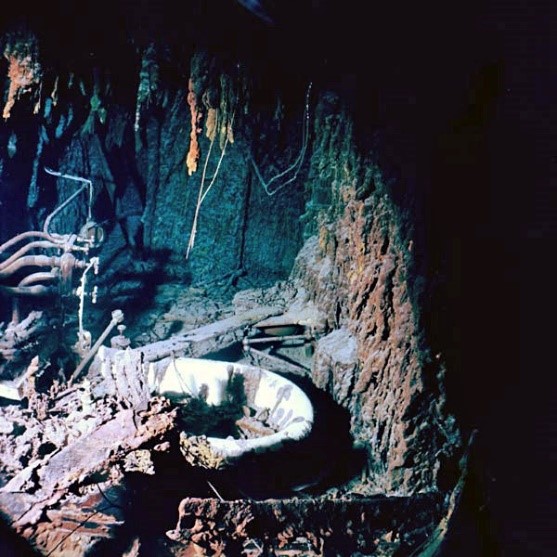
In 2012, 100 years after the sinking, the world still remembers the Titanic. Even in 2017, exhibitions are on show – Southampton, Liverpool and Belfast, home of Harland and Wolff.
The Titanic Experience can be found in the Titanic Quarter at Belfast. The Titanic Quarter has gone from a master plan to reality as a thriving and bustling destination, attracting over 1 million visitors every year.
For more information about the Titanic museum in Belfast, Northern Ireland click here
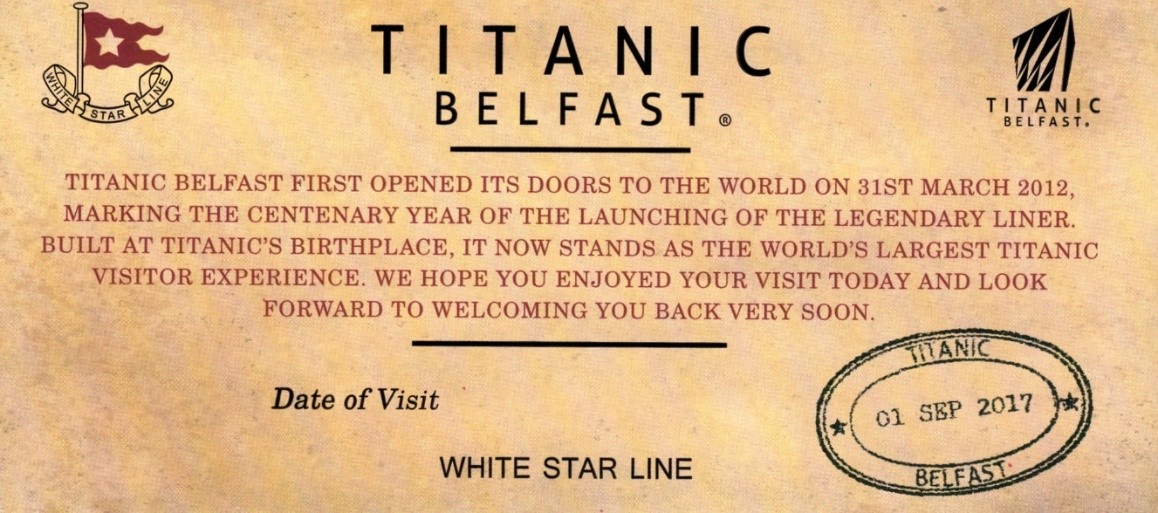 https://titanicbelfast.com/
https://titanicbelfast.com/
